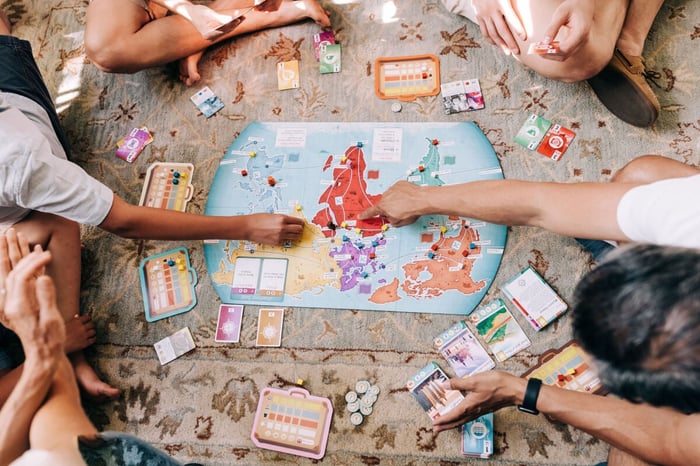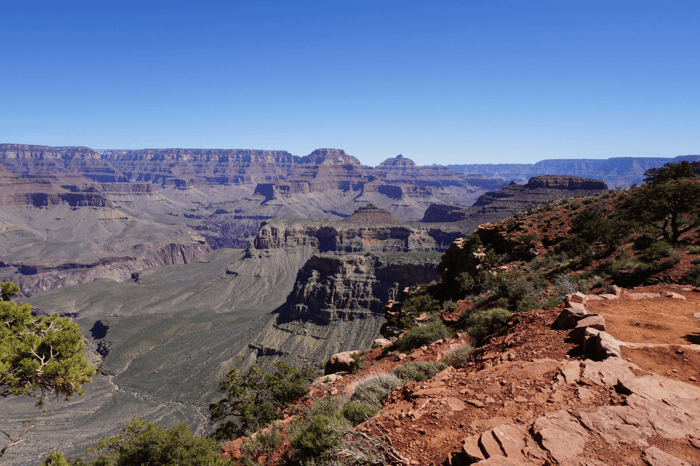Months and even years can go into the design of a board game. As you try to take the notion of an idea into a full-fledged game, you spend a lot of time testing, refining, and testing again.
Our game, Trekking the World, had its fair share of revisions and redos. We even had to completely scrap two versions of the game. But one of the most unique (and time-consuming) aspects of Trekking the World was the immense amount of attention that went into picking the locations featured on the map. The arguments...I mean debates...I mean friendly, constructive discussions that led to great results really made this game special to all of us. Here’s a closer look at the journey in choosing the destinations.
First, we were overwhelmed...
We started with a blank slate, and had the ENTIRE world to choose from. We knew we couldn’t pick destinations solely based on most popular or best known, so we started researching. From reading hundreds of travel articles and thousands or reviews from real people, we began to take notice of interesting places that came up time and time again. After this initial list (it was LONG), we put some selection criteria into place:
- Destinations must have a balance between natural and human-made destinations.
- Must be a popular (but not overrated) destination, which is of course subjective and hard to qualify.
- Destinations must elicit awe and wonder (again somewhat subjective, but this was very important to us.)
Then we started to have some clarity…
If you look at the most-reviewed destinations around the world and on each continent, you’ll see some incredible places. However, quantity doesn’t always mean quality. We found lots of places that had a ton of reviews—probably because it was easy to access—but it didn’t make it special. Therefore, these places didn’t make our list. An example of this is city gates (India gate in New Delhi, Brandenburg gate in Germany). Gates are cool and all, but we didn’t feel like they elicited enough awe or wonder. Plus there are so many around the world, so we made a group decision not to include any gates.
We applied this same logic to big buildings. You won’t find any skyscrapers on the map for Trekking the World. Equipped with some new criteria like this, the narrowing continued. We were making progress.

But then we ran into some challenges…
Early on when we were trying to determine the initial number of destinations per region, the easy answer was, “Oh we’ll do 7-8 per continent.” Done, easy, big decision made. Except...it wasn’t that easy. Choosing destinations like this created a few issues.
First, continents aren’t actually defined by any international body. There’s no official Asia, Europe, North America, etc. That surprised us. Examples of gray areas include:
- Where’s the border between Europe and Asia? (Istanbul in Turkey is REALLY unique in this regard, as a major city in two continents)
- What continents are the countries of the middle east in?
- Central America is technically part of North America but kind of feels like it’s own region.
Then there was the BIG issue of Oceania. We love Australia, New Zealand, and this entire area, but could we really have 8 destinations here? Was that too many?
In the end, we didn’t make strict rules regarding continents, but instead used them as guidelines. Our map is split into “regions” which gave us more flexibility and allowed us to put the highest-quality destinations we could on the map. For example, the Oceania region on our map includes parts of southeast asia, and Petra (in the middle east) is in the Africa region.

We had some push, pull, and compromises…
The hardest part of our adventure was that the destinations had to be awesome AND they had to be placed on a map with enough space between them to make the game playable. Oh yeah, we’re making a board game here.
For Trekking The World, we wanted to make the map mostly accurate, which involved not only endless discussion about which locations to pick, but also about map projections. We wanted an accurate map, but on an accurate map of the planet, Europe is really small. There are a bunch of iconic destinations in Europe that are so close to each other on an accurate map that including them would make it unusable.
We ended up leaving out some iconic locations we wish we could have included. Our condolences to the following: Neuschwanstein Castle in Germany, Cliffs of Moher in the UK, Kilimanjaro in the Kenya region, so many great places in India that just happened to be too close to the Taj Mahal, and more.
Finally, we went to visit all our destinations…
Okay, so we didn’t really have the budget to visit them all in person, but our marketing director, Dave, had a virtual solution. He bought an Oculus Quest, which is an awesome virtual reality headset (wire-free!), and we found an amazing app for it called Wander. It allowed us to actually VISIT all our prospective destinations virtually!
We spent about a week exploring the world virtually in Wander, which was incredibly helpful in finalizing our list. Of course, we want you to know that our picks shouldn’t be considered a judgement of any kind or trying to say which places are the best. The world is filled with treasures, even in your own backyard.
All in all, we estimate we had more than 10 people who spent hundreds of hours in selecting destinations for this game. It was a challenging process at times, but we believe it was worth it. We hope it helps your family dream of future vacations and excursions to have while traveling the world.






